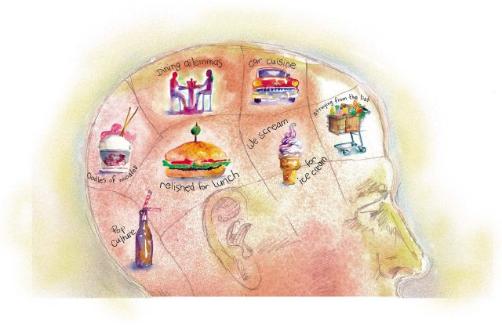
© Julie Notarianni, Krt
Just knowing how to pronounce docosahexaenoic acid, or DHA, should be a pretty good indicator of brain health, right? (Need some help? It's DOH-koh-sah-HEXXA-eh-NOH-ik.) It's enough to say "DHA," and good thing, since we'll probably be hearing more about this tongue twister as research emerges about the link between diet and dementia.
When nutritionist Elizabeth Somer's mother developed Alzheimer's disease years ago, Somer began looking for anything that might give her an edge against a similar fate. Omega-3 fat has been touted as brain food, but she learned it's not just one fat, but three: ALA, EPA and DHA.
ALA may help your heart, and EPA and DHA help your head, with DHA accounting for up to 97 percent of the omega-3 fats in the brain and up to 93 percent of the omega-3 fats in the retina. One study indicates that those with a diet high in DHA may decrease their risk of Alzheimer's disease by as much as 70 percent.
So, in the language of the grocery store aisle, what does this mean?
It means shopping for salmon and canned light tuna, said Somer, a registered dietitian who's a frequent guest expert on the
Today show,
The View and in various health-oriented magazines. She was in the Twin Cities recently to talk about nutritional trends at a forum for food industry professionals sponsored by Carmichael Lynch Spong.
There's a growing array of foods fortified with DHA, from soy milks to flour tortillas, which points to another trend on the nutrition front. "Seventy-eight percent of shoppers buy some fortified foods," Somer said, whether something as mainstream as Total cereal or more gourmet, such as Fujisan-brand sushi. This plays into the trend of do-it-yourself alternative health care -- something that began when yogurt was considered hippie food. Now, she said, yogurt is at the forefront of products that may improve the gastrointestinal health.
Yet Somer said that the top health concern in the United States remains obesity, and she showed a series of slides from the federal Centers for Disease Control and Prevention in Atlanta tracking the percentage of obese residents in all 50 states. Only Colorado has a prevalence of obesity less than 20 percent of its population. Six states, Alabama, Mississippi, Oklahoma, South Carolina, Tennessee and West Virginia, have rates above 30 percent. (To view the
data)
This circles back to brain health, "because people overweight at 50 have a threefold increase of risk for dementia," Somer said. Persuading people of the need to eat well, if not eat less, is difficult, mostly because the messages are more like warnings. "People want to know what they can eat, not what they can't," she said.
Somer, whose newest book is
Eat Your Way to Happiness (Harlequin), includes an appendix of more than 100 food products that meet the guidelines for "real foods," or foods as close to their authentic form as possible. Think oatmeal instead of granola bars, sweet potatoes instead of sweet potato fries, water instead of vitamin water.
Whose guidelines are these? Well, that's not clear, which is part of the difficulty in sorting out what's credible and what's not when it comes to nutrition advice. But there is a common-sense component to seeking out food that's still in its "authentic" form, Somer said. "If you feed yourself junk, you feel like junk, and you'll look like junk," she said.
Reader Comments
to our Newsletter